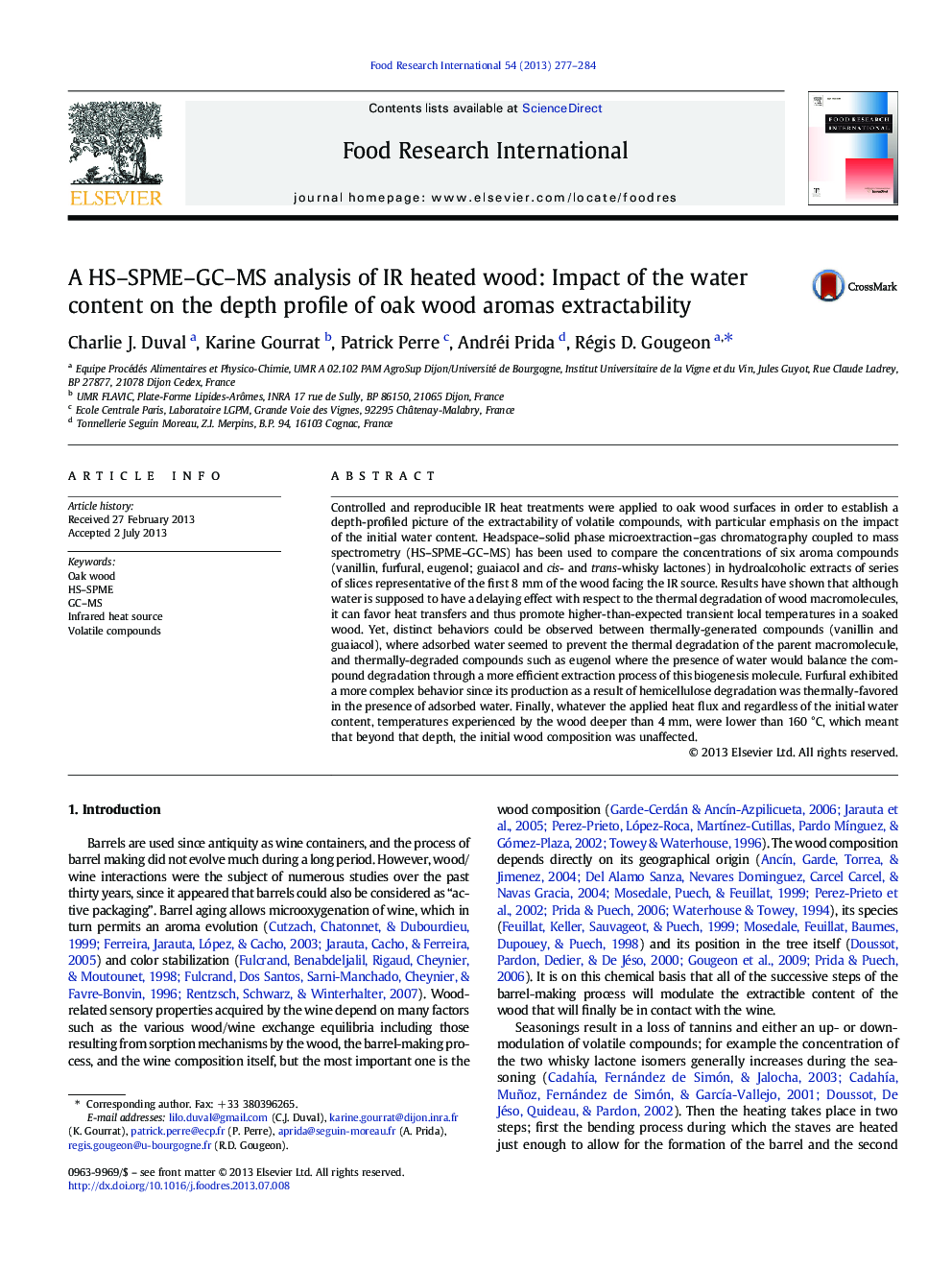| کد مقاله | کد نشریه | سال انتشار | مقاله انگلیسی | نسخه تمام متن |
|---|---|---|---|---|
| 6397247 | 1330674 | 2013 | 8 صفحه PDF | دانلود رایگان |
عنوان انگلیسی مقاله ISI
A HS-SPME-GC-MS analysis of IR heated wood: Impact of the water content on the depth profile of oak wood aromas extractability
دانلود مقاله + سفارش ترجمه
دانلود مقاله ISI انگلیسی
رایگان برای ایرانیان
موضوعات مرتبط
علوم زیستی و بیوفناوری
علوم کشاورزی و بیولوژیک
دانش تغذیه
پیش نمایش صفحه اول مقاله

چکیده انگلیسی
Controlled and reproducible IR heat treatments were applied to oak wood surfaces in order to establish a depth-profiled picture of the extractability of volatile compounds, with particular emphasis on the impact of the initial water content. Headspace-solid phase microextraction-gas chromatography coupled to mass spectrometry (HS-SPME-GC-MS) has been used to compare the concentrations of six aroma compounds (vanillin, furfural, eugenol; guaiacol and cis- and trans-whisky lactones) in hydroalcoholic extracts of series of slices representative of the first 8 mm of the wood facing the IR source. Results have shown that although water is supposed to have a delaying effect with respect to the thermal degradation of wood macromolecules, it can favor heat transfers and thus promote higher-than-expected transient local temperatures in a soaked wood. Yet, distinct behaviors could be observed between thermally-generated compounds (vanillin and guaiacol), where adsorbed water seemed to prevent the thermal degradation of the parent macromolecule, and thermally-degraded compounds such as eugenol where the presence of water would balance the compound degradation through a more efficient extraction process of this biogenesis molecule. Furfural exhibited a more complex behavior since its production as a result of hemicellulose degradation was thermally-favored in the presence of adsorbed water. Finally, whatever the applied heat flux and regardless of the initial water content, temperatures experienced by the wood deeper than 4 mm, were lower than 160 °C, which meant that beyond that depth, the initial wood composition was unaffected.
ناشر
Database: Elsevier - ScienceDirect (ساینس دایرکت)
Journal: Food Research International - Volume 54, Issue 1, November 2013, Pages 277-284
Journal: Food Research International - Volume 54, Issue 1, November 2013, Pages 277-284
نویسندگان
Charlie J. Duval, Karine Gourrat, Patrick Perre, Andréi Prida, Régis D. Gougeon,